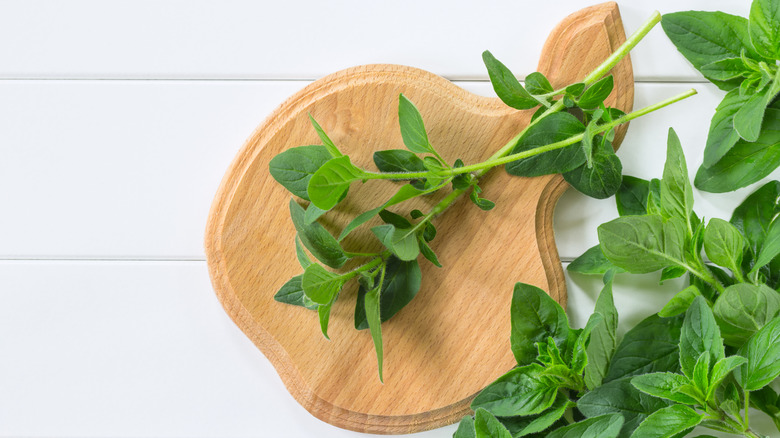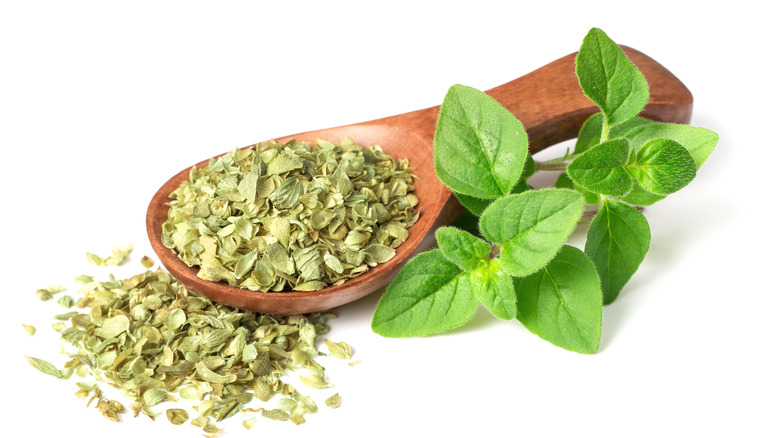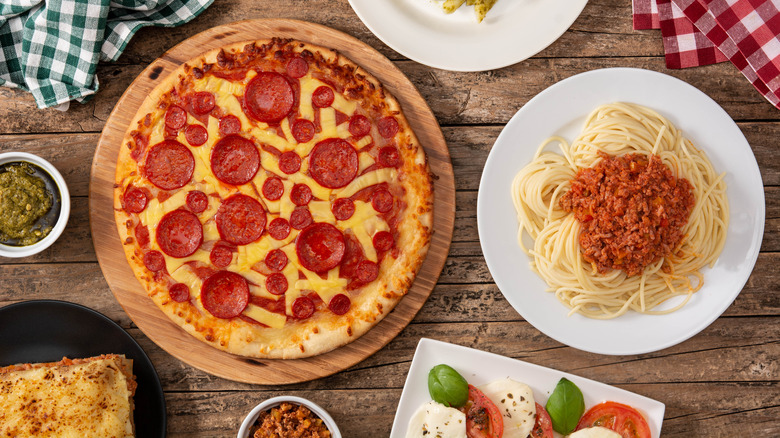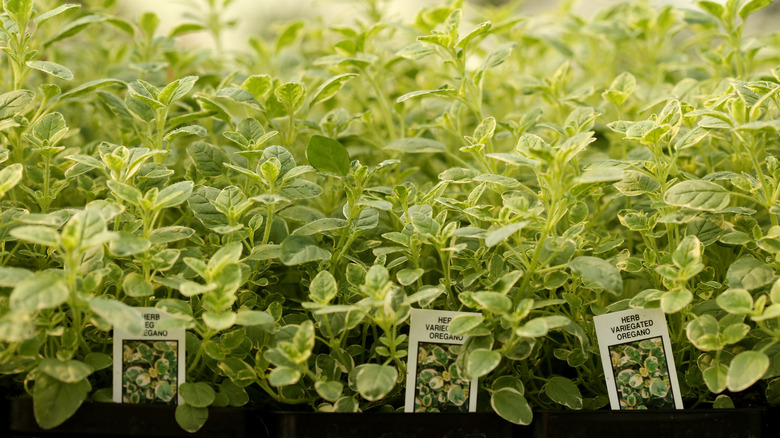Everything You Need To Know About Oregano
Oregano is such a classic herb with a great story, you may even want to pull out a glass of your favorite, spicey red wine to sip on – Brightcellar.com recommends Cabernet Franc or Carménère — as you read all about this aromatic and savory plant. Oregano (Latin name: origanum vulgare, says Myspicer) hails from Greece. However, oregano is an herb that likes to confuse its fans and has several aliases, including Spanish thyme, wild marjoram, and European oregano.
If you love this herb, you are in good company. The Greeks attributed the existence of oregano to Aphrodite, the goddess of love, who is said to have wanted it to be "joy" growing in her garden. And an herb of love and joy it quickly became, with the Romans using it in their cooking and sharing it with the rest of Europe. Today, oregano is as ubiquitous as the Italian cuisine that it often favors. This herb is both fragrant and flavorful, with its lineage connected to the mint family, reports the Christian Science Monitor. Plant Village describes oregano's leaves as oval in shape and notes that they alternate in their placement on the stem.
The faceoff: dried v. fresh
If you are wondering about its taste, wonder no more. MasterClass shares that oregano's taste is often described as sweet, spicy, peppery and a little "pungent." Oregano is a must-have in your spice drawer. MasterClass also shares that as with most herbs, oregano can be used in its fresh or dried forms. While in its fresh state, oregano is green and leafy; in its dried state, this herb is brown and more like a powder. But which is better — dried oregano or fresh? It really depends.
The City Cook explains that they share Ina Garten's assessment of this herb in its fresh state, and that is its flavor is a little "aggressive" compared to when it is dried, noting that fresh oregano is best when you are using sprigs to cook with and can discard before serving. MasterClass also agrees with this assessment, suggesting you can better control the flavor of a dish that uses oregano by using its dried version. They also highlight that unlike other herbs that often lose some of their punchy flavor when they are dried, oregano is an exception to this rule. Of the two, the site also points out that dried is definitely the more economical buy.
How to cook with oregano
When it comes to cooking with this herb, oregano is the quintessential ingredient in many an Italian dish or Mediterrean salad. According to MasterClass, oregano is that taste-bud-popping flavor in pretty much any Italian dish that involve tomatoes — hello, pizza and spaghetti! But oregano's flavorful properties also work well in vinaigrettes and marinades. MasterClass notes that if you are using garlic, basil, onion, or thyme, chances are oregano is going to enter the equation because it works so well with all of those ingredients. They also share that oregano works well with lamb, chicken, or beef.
The City Cook shares that oregano is wonderful to use to infuse with your olive oil, in making Greek salads, preparing eggplant parmesan, and in dishes that use black olives, feta cheese, and lemon. They also offer this game-changing insider's tip: Use your fingers to release this herb's flavor. They recommend rubbing the oregano between your fingers to do this, and share that this is really good to do with all dried herbs. Additionally, because there are several varieties of oregano, you may want to sample a few to decide which flavor you prefer. Greek oregano is the most common, but you may find Spanish, Mexican, or European oregano on your market's shelves. These are going to be stronger in flavor. So, if you are unsure, they recommend sticking with the Greek version.
Are substitutions possible?
Oregano is a pretty special herb. Its flavor adds the je n'ai sais quoi to so many dishes. But what if you are in the middle of cooking some of those recipes and realize you do not have oregano on hand? The Spruce Eats reveals that you can easily substitute marjoram for its herb relative. Majoram is milder and sweeter. They recommend using half the amount of oregano the recipe calls for. No marjoram? No problem. Scour your spice drawer or shelf for basil or thyme. Either of these two herbs can also be substituted for oregano. If you need to substitute fresh oregano for dried oregano, Martha Stewart shares that you want to remember this rule: one tablespoon fresh oregano is the equivalent one teaspoon dried.
What about storing your oregano? Dried oregano is easy. Just keep it in a cool, dry place in your kitchen in an airtight container to preserve its flavor. Fresh oregano doesn't have a long shelf life. You will want to store its leaves in a plastic bag in the fridge. They note that you may squeeze a few more days out of it if you add a damp paper towel in the plastic bag. If you do not have an immediate need for your fresh oregano, you might want to consider freezing it instead.



